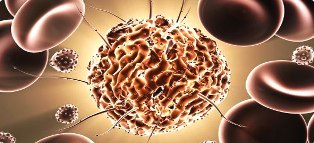Stem cells are immature cells that are able to manufacture other blood cells that mature and function as needed. These cells are worded in stem cell transplants, which help out cancer patients in producing new blood cells after their own hematopoietic (blood forming) stem cells have been removed by radiation therapy and chemotherapy.
Stem Cell Transplantation
Researchers in Japan have for the first time exposed it is possible to make cancer-specific immune system cells from persuade pluripotent stem cells (iPSCs). Their work convey closer the day when therapies use cloned versions of patients' own cells to boost up their immune system's natural capacity to kill cancer cells.

The researchers, from the RIKEN Research Centre for Allergy and Immunology in Yokohama, explained how they formed cancer-specific killer T lymphocytes from iPSCs, in a paper published online on 3 January in the magazine Cell Stem Cell.
A stem cell transfer is a method of substitute blood-forming cells destroyed by cancer treatment. A stem cell transplant absorbs giving immature blood cells (stem cells) to the patient after treatment. The goal of a stem cell transplant is to facilitate the bone marrow convalesce and continue to make healthy blood cells. Stem cell transplants are also called peripheral stem cell support.
A stem cell transplant might be autologous, which means the stem cells come from your own body. Or a stem cell transplant might be defined allogeneic, which means the stem cells come from a donor.
Process of Transplantation
In a archetypal stem cell transplant for cancer very high doses of chemo are worn, often along with radiation therapy, to try to devastate all the cancer cells. This action also kills the stem cells in the bone marrow. As soon as after treatment, stem cells are given to substitute those that were destroyed. These stem cells are specified into a vein, much like a blood transfusion. Over time they reconcile in the bone marrow and begin to grow and make healthy blood cells. This procedure is called engraftment.
There are 3 types f stem cells transplantation.
• Autologous —the cells come from you
• Allogeneic —the cells come from a matched related or unrelated donor
• Syngeneic—the cells come from your identical twin or triplet

Autologous stem cell transplants
These stem cells come from you alone is called the Autologous. In this type of transplant, your stem cells are taken in use before you get cancer treatment that wipes out them. Your stem cells are unconcerned, or harvested, from either your bone marrow or your blood and then frozen. After giving high doses of chemo and/or radiation the stem cells are thawed and given back to you.
One benefit of autologous stem cell transplant is that the patient is getting them own cells back. When they donate their own stem cells they don’t have to worry about the attach attacking their body (graft-versus-host disease) or about getting a new infection from another person. But there can still be attach failure, and autologous transplants can’t produce the “graft-versus-cancer" effect.
Allogeneic stem cell transplants
In the majority the ordinary type of allogeneic transplant, the stem cells come from a donor whose tissue type strongly matches the patient’s. The greatest donor is a close family member, habitually a brother or sister. If a patient does not have a good match in his family, a donor might be found in the broad public through a national registry. This is time to time called a MUD (matched unrelated donor) transplant. Transplants with a MUD are typically riskier than those with a relative who is a good match.
Syngeneic stem cell transplants
This is a unusual kind of allogeneic transplant that can only be used when the receiver has an indistinguishable sibling (twin or triplet) who can donate — someone who will have the same tissue type. An benefit of syngeneic stem cell transplant is that graft-versus-host ailment will not be a difficulty. There are no cancer cells in the transfer, either, as there would be in an autologous transplant.
A difficulty is that because the new immune system is so much like the recipient’s immune system, there is no graft-versus-cancer result, either. Every attempt must be made to wiped out all the cancer cells before the transplant is done to help keep the cancer from relapsing.